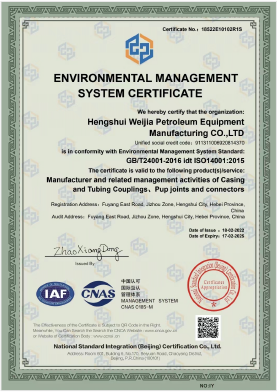- Afrikaans
- Albanian
- Amharic
- Arabic
- Armenian
- Azerbaijani
- Basque
- Belarusian
- Bengali
- Bosnian
- Bulgarian
- Catalan
- Cebuano
- Corsican
- Croatian
- Czech
- Danish
- Dutch
- English
- Esperanto
- Estonian
- Finnish
- French
- Frisian
- Galician
- Georgian
- German
- Greek
- Gujarati
- Haitian Creole
- hausa
- hawaiian
- Hebrew
- Hindi
- Miao
- Hungarian
- Icelandic
- igbo
- Indonesian
- irish
- Italian
- Japanese
- Javanese
- Kannada
- kazakh
- Khmer
- Rwandese
- Korean
- Kurdish
- Kyrgyz
- Lao
- Latin
- Latvian
- Lithuanian
- Luxembourgish
- Macedonian
- Malgashi
- Malay
- Malayalam
- Maltese
- Maori
- Marathi
- Mongolian
- Myanmar
- Nepali
- Norwegian
- Norwegian
- Occitan
- Pashto
- Persian
- Polish
- Portuguese
- Punjabi
- Romanian
- Russian
- Samoan
- Scottish Gaelic
- Serbian
- Sesotho
- Shona
- Sindhi
- Sinhala
- Slovak
- Slovenian
- Somali
- Spanish
- Sundanese
- Swahili
- Swedish
- Tagalog
- Tajik
- Tamil
- Tatar
- Telugu
- Thai
- Turkish
- Turkmen
- Ukrainian
- Urdu
- Uighur
- Uzbek
- Vietnamese
- Welsh
- Bantu
- Yiddish
- Yoruba
- Zulu
pup joint tubing
Understanding Pup Joint Tubing in Oil and Gas Operations
In the oil and gas industry, efficient and effective management of resources is critical for successful operations. One important component in this context is pup joint tubing, which plays a vital role in the drilling and completion processes. This specialized type of pipe serves various purposes in the field, and understanding its characteristics and applications is essential for engineers and technicians involved in hydraulic design and operations.
Pup joint tubing refers to short sections of pipe that are used to connect larger lengths of tubing or casing in a well or production system. Generally, these joints are available in lengths that range from 2 to 5 feet. Their smaller size allows for greater flexibility when designing and configuring a well's components, ensuring that operators can make the necessary adjustments based on specific project requirements or conditions encountered during drilling.
One of the standout features of pup joints is their ability to accommodate changes in elevation and deviation in wellbore paths. In many drilling scenarios, wellbores are not perfectly straight and may require additional levels of precision. Pup joints can be threaded onto existing lengths of tubing, compensating for unexpected bends or changes in trajectory. This capability is particularly important in complex reservoirs where geologic conditions can vary significantly over short distances.
pup joint tubing

Another crucial advantage of pup joint tubing is its role in pressure control and safety management. During the extraction process, it’s essential to maintain the integrity of the pressure within the well. Pup joints can act as a buffer zone, absorbing fluctuations in pressure that might otherwise cause damage to the more extensive tubing systems. This is particularly vital when dealing with high-pressure environments, where the failure of a single pipe could jeopardize an entire operation.
Moreover, pup joints can also provide ease of installation and maintenance. Given their shorter lengths, these joints are relatively lightweight and easier to handle compared to longer segments of tubing. This not only simplifies the rig setup but also expedites repair and replacement activities when necessary. In a sector where time is money, the ability to swiftly manage equipment is a considerable asset.
When it comes to materials, pup joint tubing is typically made from the same steel alloys used for standard tubing and casing. These materials are chosen for their strength and resistance to corrosion, thereby ensuring that the pup joints can withstand the harsh environments often found in oil and gas operations. Standard sizing and threading also make it simple to integrate pup joints into existing systems without the need for specialized fittings or modifications.
In conclusion, pup joint tubing is an indispensable component in the oil and gas sector, providing flexibility, safety, and efficiency. As exploration techniques and extraction technologies continue to advance, the demand for adaptable solutions like pup joints will likely increase. Engineers and rig technicians must appreciate the importance of these components in maintaining effective operations and optimizing resource extraction. By understanding the features and benefits of pup joints, professionals in the field can better plan their projects, mitigate risks, and ultimately contribute to the success of their operations in a highly competitive environment.
-
Tubing Pup Joints: Essential Components for Oil and Gas OperationsNewsJul.10,2025
-
Pup Joints: Essential Components for Reliable Drilling OperationsNewsJul.10,2025
-
Pipe Couplings: Connecting Your World EfficientlyNewsJul.10,2025
-
Mastering Oilfield Operations with Quality Tubing and CasingNewsJul.10,2025
-
High-Quality Casing Couplings for Every NeedNewsJul.10,2025
-
Boost Your Drilling Efficiency with Premium Crossover Tools & Seating NipplesNewsJul.10,2025







